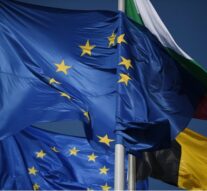
The EU energy goals: current status and future perspectives
Economy 24 May 2023Estimated time of reading: ~ 3 minutes
The EU has been at the forefront of promoting sustainable energy practices and addressing climate change in recent decades. As part of its commitment to reducing greenhouse gas emissions and ensuring a secure energy future, the EU has set ambitious energy goals. What is the current status of the EU’s energy goals and the potential future directions for achieving a sustainable energy landscape within its economic frameworks?
One of the key milestones is the EU’s 20-20-20 targets, which aimed to achieve a 20% reduction in greenhouse gas emissions, a 20% increase in energy efficiency, and a 20% share of renewable energy in the overall energy mix, all by 2020. The EU successfully met these targets, showcasing its commitment and ability to drive sustainable energy transitions.
Looking ahead, the EU has set even more ambitious energy goals. The European Green Deal, introduced in 2019, serves as a comprehensive roadmap for transforming the EU into a climate-neutral continent by 2050. To achieve the EU’s long-term climate goals, the 2030 climate target has been revised to a minimum of 55% reduction in greenhouse gas emissions compared to 1990 levels. This higher target reflects the urgency to accelerate decarbonization efforts and align with the objectives of the Paris Agreement. It also serves as a catalyst for more significant investments in renewable energy infrastructure and technological innovation.
Renewable energy sources will play a pivotal role in the EU’s energy future. The EU aims to increase the share of renewable energy to at least 32% by 2030. To facilitate this transition, policies and incentives promoting the development of renewable energy technologies, such as offshore wind farms and advanced solar technologies, will be crucial. Additionally, the electrification of various sectors, including transportation and heating, will contribute to reducing reliance on fossil fuels and advancing sustainability. Energy efficiency remains a key focus for the EU.
Implementing smart grid systems and digital technologies will enable better monitoring and optimization of energy consumption patterns. The European Commission unveiled the REPowerEU plan, aimed at swiftly reducing the European Union’s reliance on Russian fossil fuels well before 2030 by expediting the transition to clean energy. The plan is structured around three key pillars: energy conservation, clean energy generation, and diversification of energy sources. As part of an effort to significantly increase the integration of renewable energy in power generation, industry, buildings, and transportation, the Commission proposed raising the renewable energy target to 45% by 2030 in the directive. Subsequently, on March 30, 2023, the European Parliament and the Council reached a preliminary agreement to further elevate the binding renewable energy target to a minimum of 42.5% by 2030. This commitment highlights the EU’s dedication to intensifying renewable energy adoption and reinforcing its position as a frontrunner in combating climate change and promoting sustainable energy practices.
The EU’s energy goals reflect a strong commitment to combat climate change and transition to a sustainable energy future. The achievements in meeting the 20-20-20 targets have laid a solid foundation for further progress. The European Green Deal and its revised climate targets demonstrate the EU’s ambition to become a global leader in decarbonization efforts. By prioritizing renewable energy deployment, energy efficiency improvements, and innovative technologies, the EU is poised to drive the transition towards a clean, secure, and climate-neutral energy landscape. However, to overcome challenges and fully realize these goals, close collaboration between policymakers, industry stakeholders, and citizens will be essential, ensuring a sustainable and prosperous future for the EU and beyond.
Written by: Nenad Stekić


